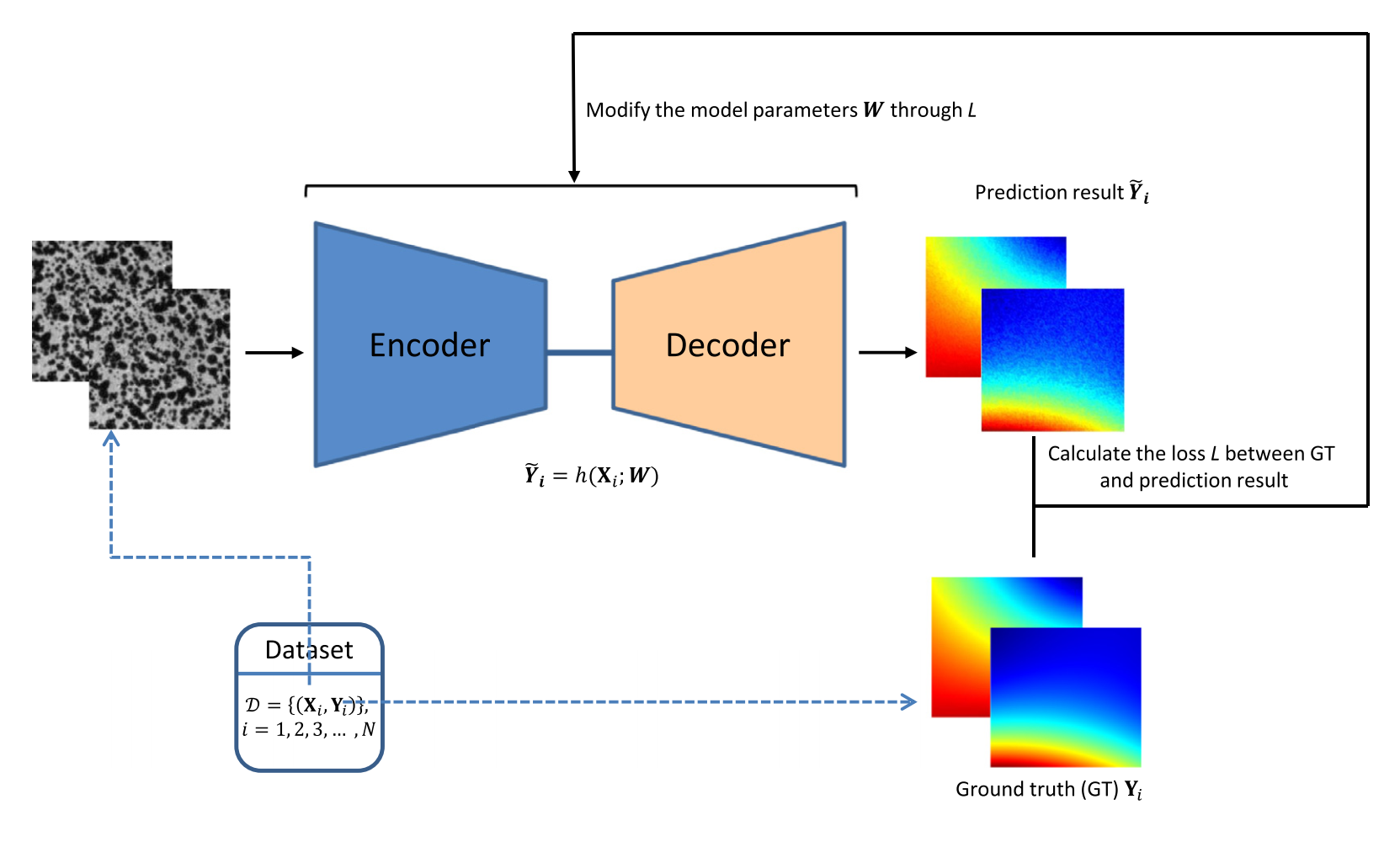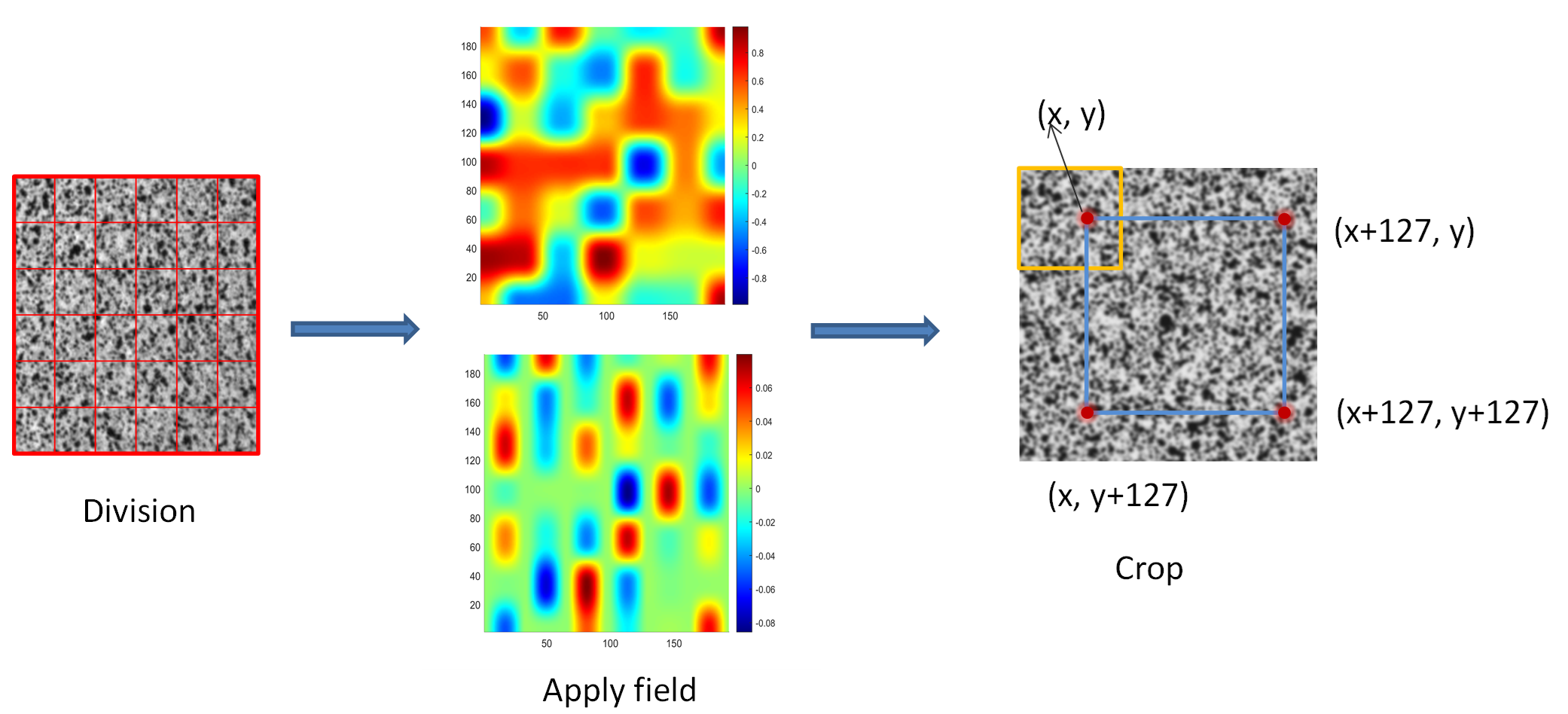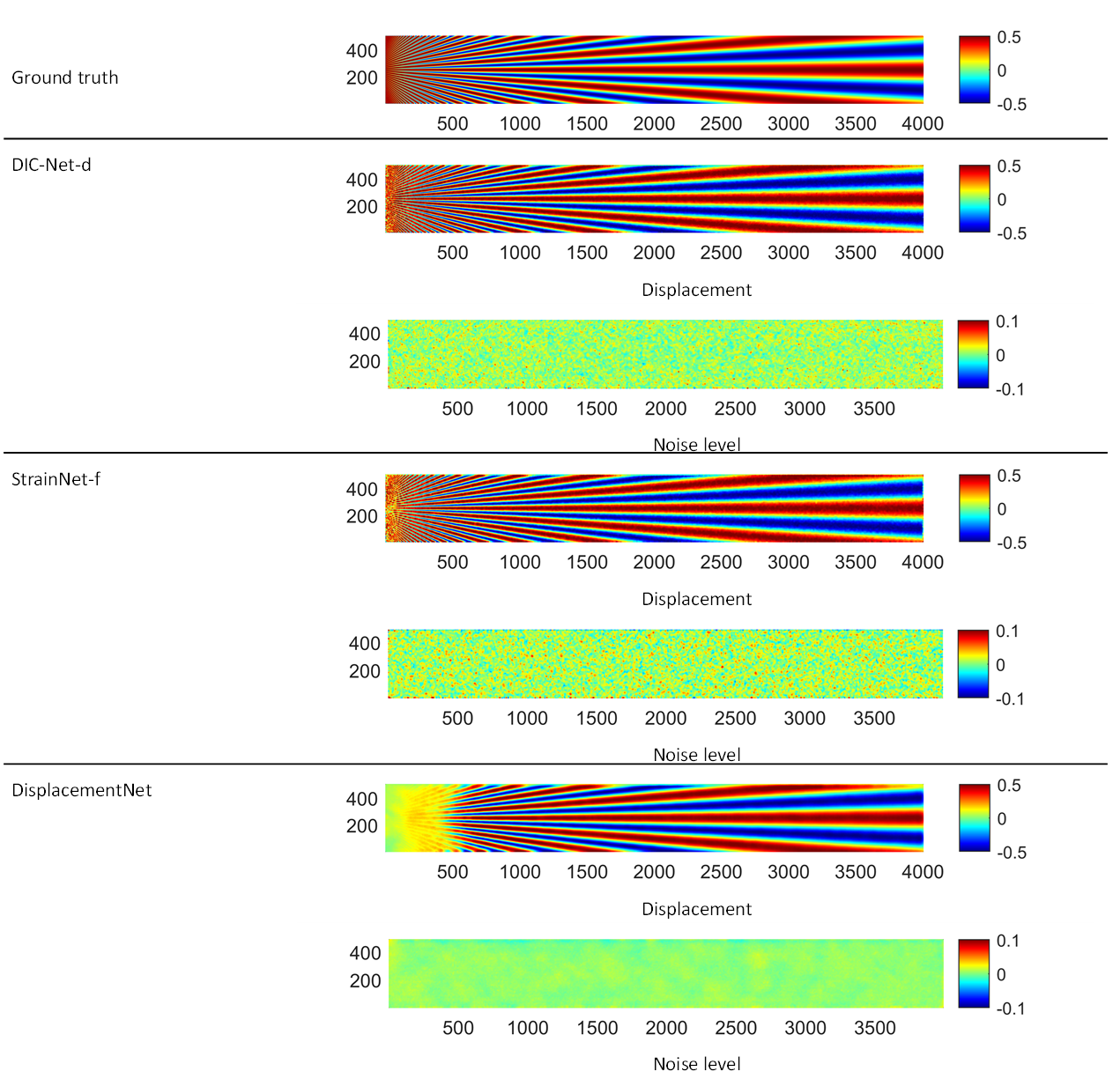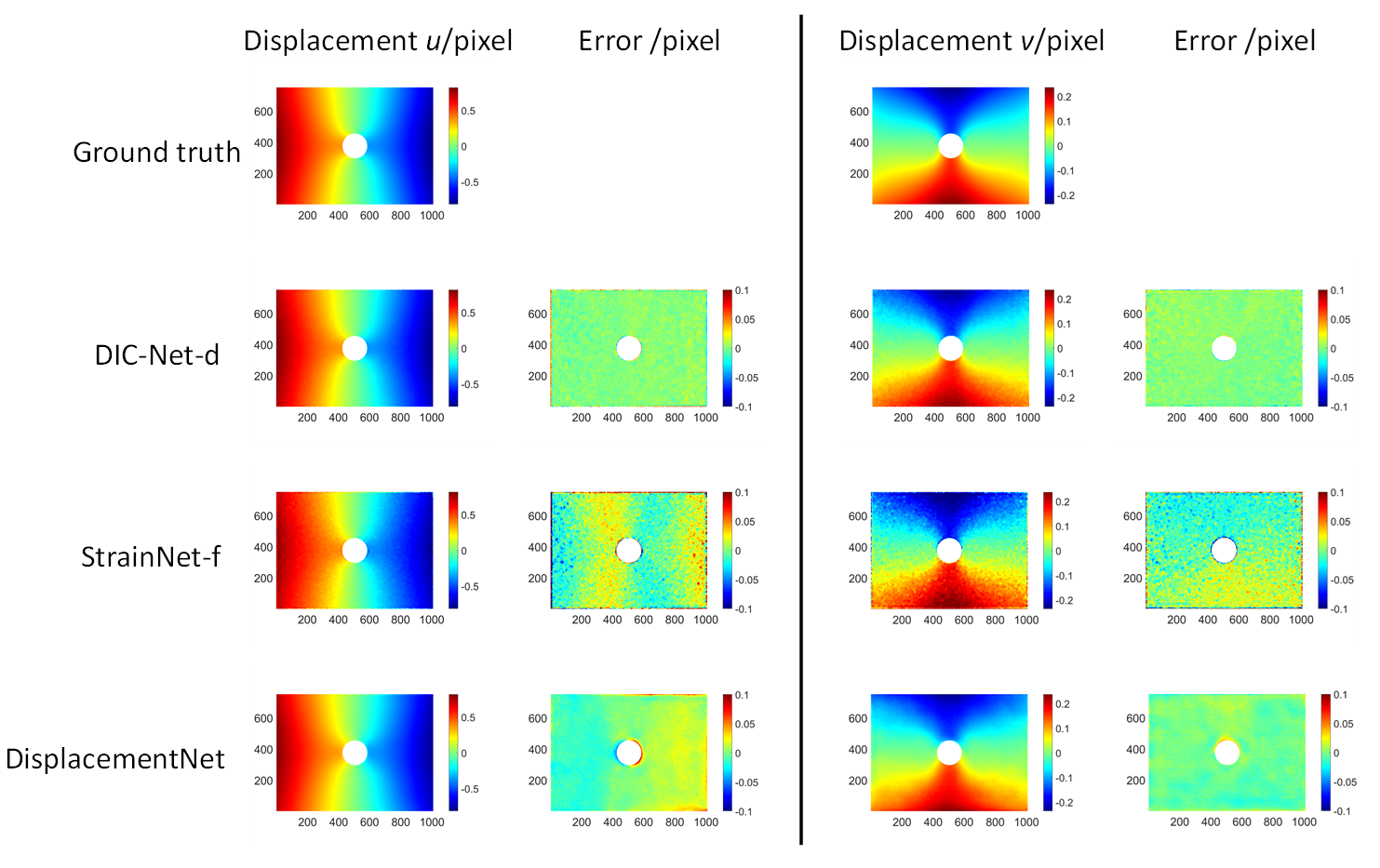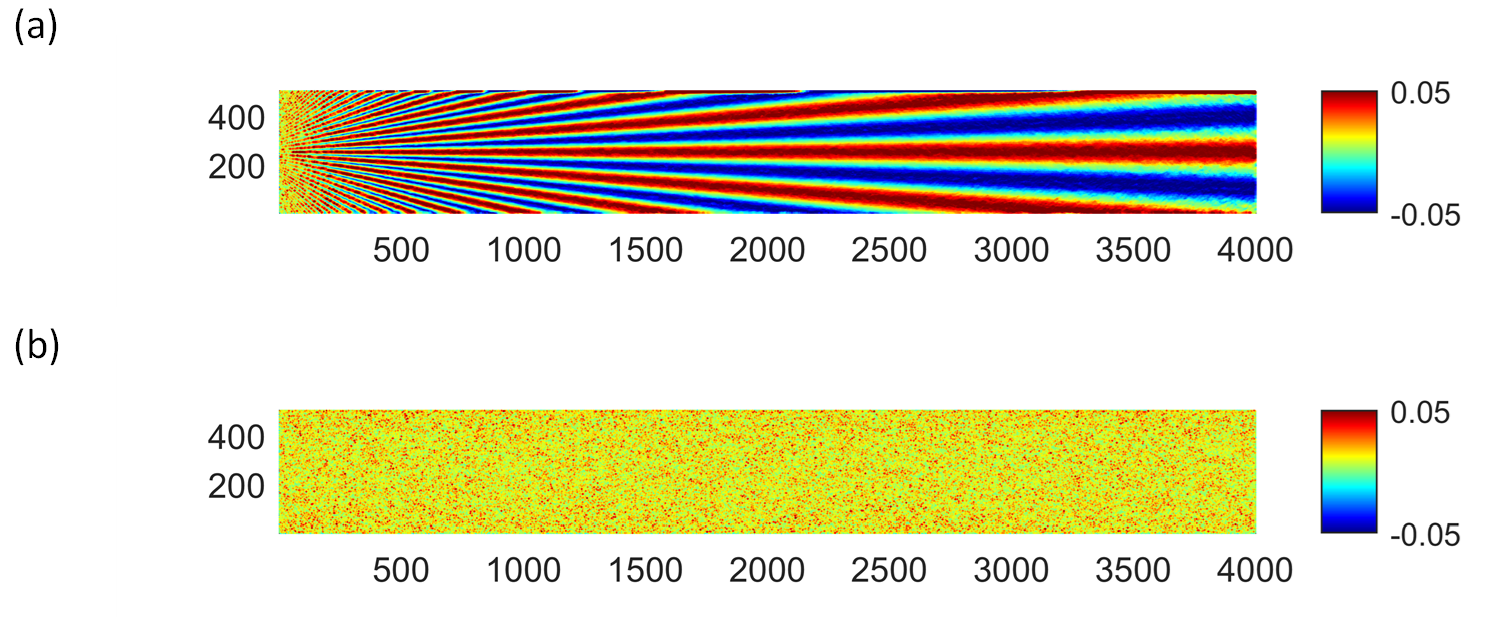DIC-Net: Upgrade the Performance of Traditional DIC with Hermite Dataset and Convolution Neural Network
Hermite dataset generation implementation (matlab) and DIC-Net CNN implementation (pytorch).
Our method is currently the SOTA of 2D-DeepDIC method in terms of accuracy and spatial resolution(SR).
In the experimental test set with 3216 samples, DIC-Net-d achieves an absolute pixel error (MAE) score of 0.0130 pixels and 0.0126 pixels in the x direction and y direction which is only 48.5% and 47.9% of the prior best method. The spatial resolution (SR) is 17.25 pixels with a noise level of 0.0136, and the metrological performance indicator is 0.234 (lower is better) which outperforms existing traditional and non-traditional methods.
For more details, please refer to our paper: https://doi.org/10.1016/j.optlaseng.2022.107278
- Frame of DIC-Net
- Frame of Hermite Dataset
- Prediction error statistics of three networks on 3216 samples
|
Displacement mode (number of samples) |
Network |
Average MAE/pixel |
Average RMSE/pixel |
||
|
u |
v |
u |
v |
||
|
Pure translations (785) |
DIC-Net-d |
0.0124 |
0.0115 |
0.0155 |
0.0147 |
|
DisplacementNet |
0.0182 |
0.0154 |
0.0197 |
0.0172 |
|
|
StrainNet-f |
0.0265 |
0.0255 |
0.0442 |
0.0418 |
|
|
Gaussian (445) |
DIC-Net-d |
0.0128 |
0.0122 |
0.0161 |
0.0156 |
|
DisplacementNet |
0.0171 |
0.0164 |
0.0199 |
0.0194 |
|
|
StrainNet-f |
0.0256 |
0.0265 |
0.0441 |
0.0433 |
|
|
Periodic displacement (497) |
DIC-Net-d |
0.0157 |
0.0169 |
0.0201 |
0.0217 |
|
DisplacementNet |
0.1191 |
0.1539 |
0.1395 |
0.1783 |
|
|
StrainNet-f |
0.0288 |
0.0295 |
0.0467 |
0.0458 |
|
|
Strain concentrations (418) |
DIC-Net-d |
0.0137 |
0.0122 |
0.0175 |
0.0157 |
|
DisplacementNet |
0.0410 |
0.0252 |
0.0529 |
0.0315 |
|
|
StrainNet-f |
0.0301 |
0.0280 |
0.0504 |
0.0457 |
|
|
Linear displacement (357) |
DIC-Net-d |
0.0120 |
0.0117 |
0.0151 |
0.0148 |
|
DisplacementNet |
0.0169 |
0.0125 |
0.0187 |
0.0144 |
|
|
StrainNet-f |
0.0254 |
0.0251 |
0.0435 |
0.0408 |
|
|
Quadratic displacement (714) |
DIC-Net-d |
0.0121 |
0.0117 |
0.0153 |
0.0149 |
|
DisplacementNet |
0.0143 |
0.0152 |
0.0165 |
0.0174 |
|
|
StrainNet-f |
0.0250 |
0.0243 |
0.0427 |
0.0405 |
|
|
Total (3216) |
DIC-Net-d |
0.0130 |
0.0126 |
0.0165 |
0.0161 |
|
DisplacementNet |
0.0356 |
0.0378 |
0.0417 |
0.0440 |
|
|
StrainNet-f |
0.0268 |
0.0263 |
0.0450 |
0.0427 |
|
- The performance of spatial resolution in Star5 image set
|
Network |
SR |
Noise level |
𝛼 |
|
DIC-Net-d |
17.25 |
0.0136 |
0.234 |
|
StrainNet-f |
26.93 |
0.0163 |
0.439 |
|
DisplacemeNet |
52.66 |
0.0041 |
0.216 |
- Star5 displacement and noise level predicted by three networks.
- Tensile plate with hole predicted by three networks.
- Star6 strain predicted by DIC-Net-s
Matlab
- R2020b
- MATLAB Support for MinGW-w64 C/C++ Compiler
Python
- python 3.0
CUDA 11.5
Pytorch 1.10
Numpy 1.20.3
The Version used in the paper is:
DIC-Net-d
- Google Drive:https://drive.google.com/file/d/12bO8bZ3cX_3K3mPxer_IHWVJHx16mWJx/view?usp=share_link
- Baidu Netdisk:链接:https://pan.baidu.com/s/1bGbVPY6piE1XHQX7FPtR_A 提取码:7cqj
DIC-Net-s
- Google Drive:https://drive.google.com/file/d/19aZQrc-mnd5W8jYfn6DZmhDSZTKxdxaP/view?usp=share_link
- Baidu Netdisk:链接:https://pan.baidu.com/s/1GfvhWms_5mLhN7zP1q0AXg 提取码:br61
Hermite Dataset
- Google Drive:
- Baidu Netdisk:链接:https://pan.baidu.com/s/14KE8gOk81ETEEtKnFoc8Zw 提取码:90w1
- The Hermite dataset provided here has a total of 85,700 image pairs, the first 42,900 pairs are used in our paper, please adjust as needed.
Note: It is possible to obtain a more powerful DIC-Net by modifying the parameters of the Hermite element for retraining, so our model parameters would be continuously updated.Refer to https://github.com/YinWang20/DIC-Net-pretrained-Models
@article{WANG2023107278,
title = {DIC-Net: Upgrade the performance of traditional DIC with Hermite dataset and convolution neural network},
journal = {Optics and Lasers in Engineering},
volume = {160},
pages = {107278},
year = {2023},
issn = {0143-8166},
doi = {https://doi.org/10.1016/j.optlaseng.2022.107278},
url = {https://www.sciencedirect.com/science/article/pii/S0143816622003311},
author = {Yin Wang and Jiaqing Zhao}
}
We're well underway to get the code in order, if you need any help, don't hesitate to contact the corresponding author (jqzhao@mail.tsinghua.edu.cn) right away!
